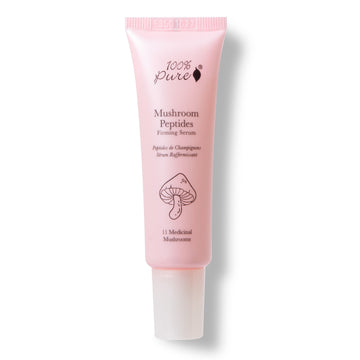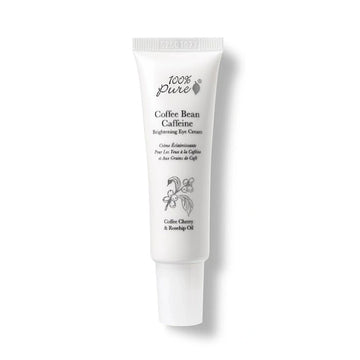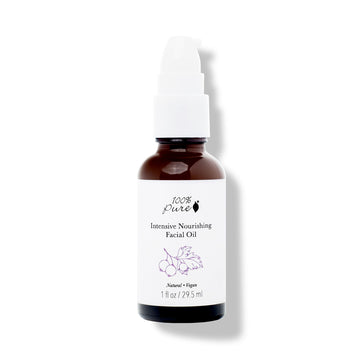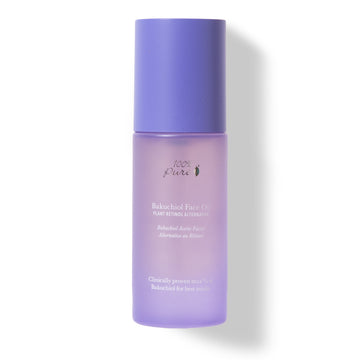Our clean beauty guide on toxic ingredients, how to identify and avoid them, and the easiest way to transition to clean beauty with the best natural skin care alternatives
Written by: 100% PURE ®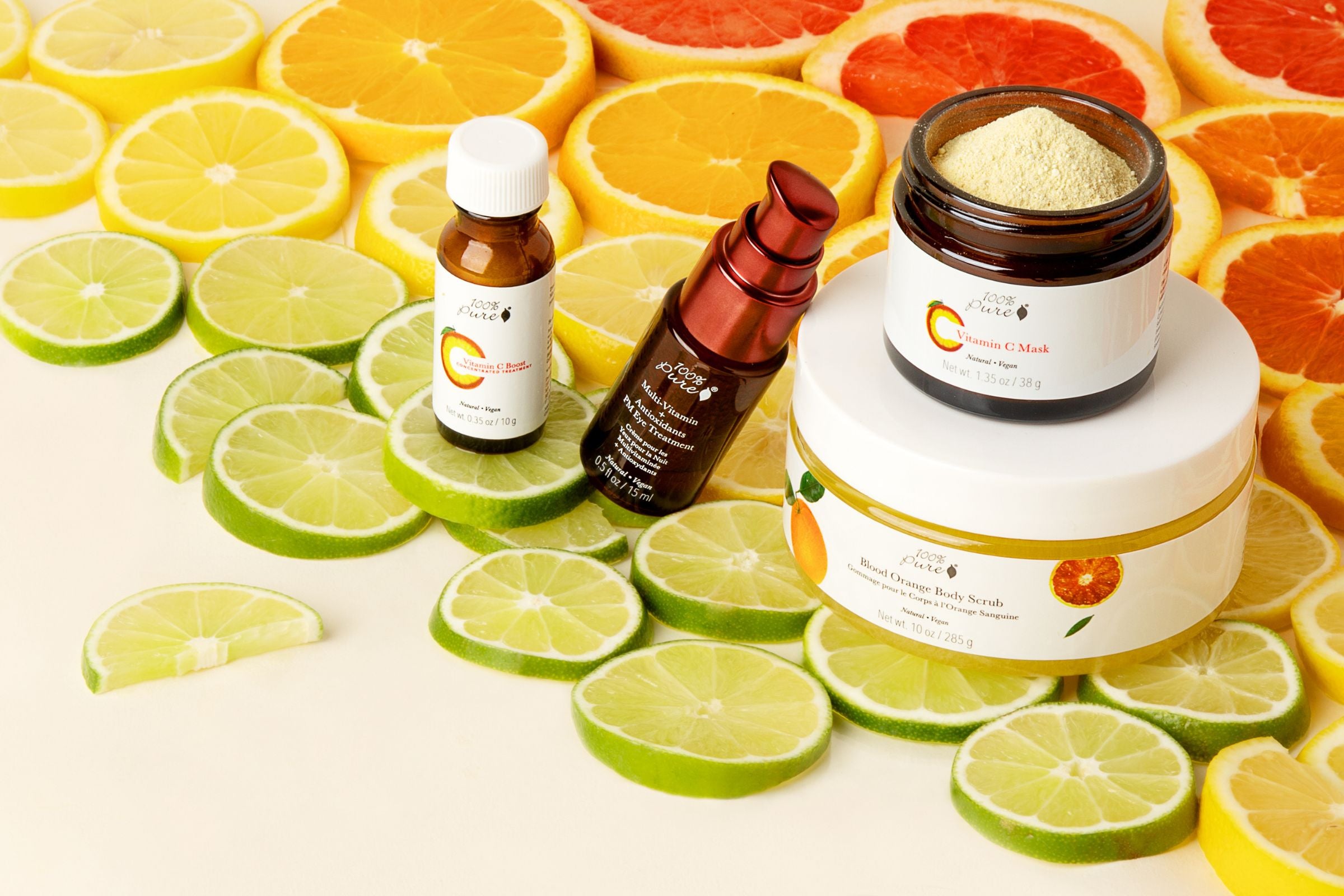
You’ve probably come across one of the plethoras of detox diets and juice cleanses, and may have wondered, what’s the point? The truth is, our bodies are put through A LOT. They’re constantly bombarded by toxins from our environment to the foods and drinks we consume.
Unfortunately, personal care and beauty products are not exempt from chemical culprits. There are many harmful effects on our health, skin and the environment from toxic ingredients linked to toxic ingredients in mainstream skin care products.
In our ‘Clean Beauty 101’ guide, we’re tackling ambiguous labels, which toxic ingredients to avoid, and how to easily switch to clean beauty. And, for the knockout round, conventional products may stand little chance against the fabulous, natural skin care swaps we have in the ring for you. Let’s get ready to rumble!
Simply, clean beauty relates to skincare and cosmetic products mindfully made that don’t contain toxic ingredients linked to harmful health effects. The popularity of clean beauty is increasingly growing as it's the best way to protect a person's health, skin, and the environment. When a brand claims to be "clean", it incorporates the following terms:
Organic: implies that no toxic chemicals have been used in the production of the material. These products have special seals on them, which a consumer should check before purchasing.
Cruelty-Free: refers to a final product and its ingredients that have never been tested on animals.
Green: refers to the manufacturing of the product from ingredient sourcing to final packaging having no harmful impact on the environment.
Natural: relies on natural ingredients. These brands aim to find natural solutions to replace toxic chemicals.
Why is it important to nix the risks of toxic ingredients in products for clean beauty? Unfortunately, since there’s no established, industry-wide legal or official definition of clean beauty, brands can define it, however, their heart desires. Since our skin is a living and breathing piece of tissue that absorbs oxygen and water, it’s also going to naturally absorb what you put on it. Do you know what that means?
Toxic ingredients in your makeup and skincare can end up infiltrating your skin and into your bloodstream. Whether it’s preservatives to increase a product’s shelf life to synthetic solvents or binding agents in many cosmetics, many toxic ingredients can pose side effects to our health, wellness, and skin. We’ll touch more on that below!
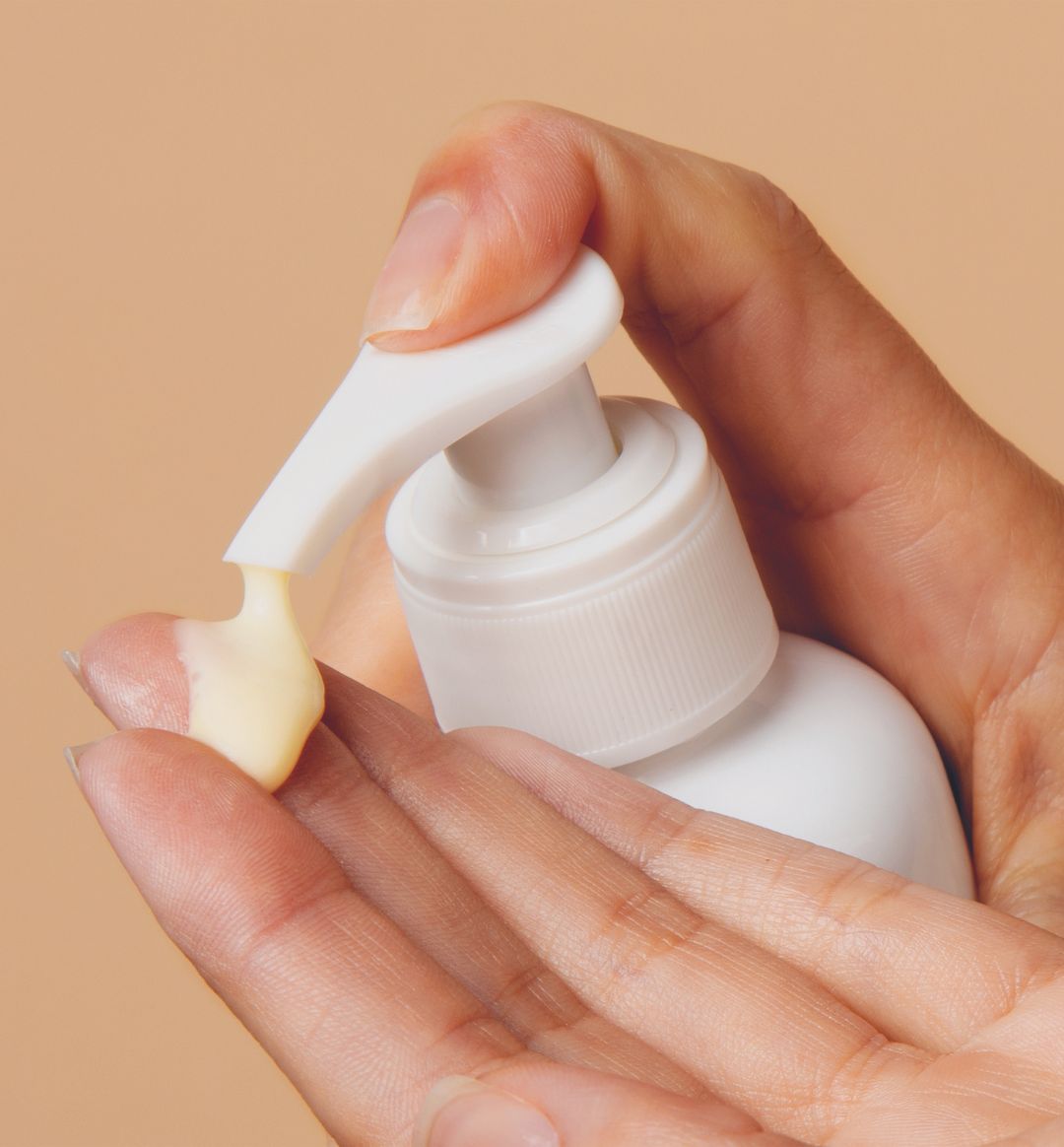
If you could decide exactly what goes on your skin, what would you include? Sugar, (pumpkin) spice, and everything nice would be at the top of our list, but unfortunately, product formulas just aren’t that sweet and simple.
When we think about what common ingredients are in popular skincare items, it’s frustrating how many damaging ingredients have become normalized in the industry. You can avoid cheap fillers, harsh ingredients, toxicity, and synthetics with our lovely list of pure, cruelty-free, and natural skin care alternatives.
But before we get to that naturally sweet side of skincare, we need to delve into the sour part – and that’s what the common top toxic ingredients are and how they affect our skin - and health:
Sulfates
Don’t seal your skin fate with sulfates. Sodium lauryl sulfates (aka SLS or SLES) are chemical latherers used in face cleansers, including body and hair washes, to create that bubbling or sudsing effect. They can be harsh and stripping on the skin, removing our natural protective oils and causing irritation.
Furthermore, SLES is a cosmetic surfactant that lingers in the environment and is a known carcinogen. Sulfates can irritate the skin, leaving it stripped and inflamed. It can trigger skin conditions like rosacea, eczema, and acne.
Parabens
‘Ben’ there, don’t do that. And by ‘that’, we mean using products with parabens, which are artificial preservatives aimed to increase the shelf life of a product. According to the Environmental Working Group (EWG), parabens are known to mimic and disrupt normal hormone behavior in our bodies. This can lead to inconsistent bodily functions, and reproductive issues, and it has also been linked to cancer.
It’s exactly why we stick with certain plant-based ingredients that can naturally stabilize a formula without the harmful side effects of artificial preservatives. Take our Mushroom Peptide Serum: Featuring skin-beneficial medicinal mushrooms and quinoa peptides, this anti-aging skin wonder formula makes skin more resilient and vibrant, and it increases firmness and elasticity.
Fragrances
Something just doesn’t smell right here. Whether it’s labeled as “fragrance” or “parfum”, artificial fragrances can act as irritants on the skin, especially for those with sensitive skin. The word “fragrance” is just a decoy that many brands use to avoid writing the actual chemicals they use to add the scent.
It should make ‘scents’ then why we use essential oils, which drive the effectiveness of the product and give a pleasant, natural aroma. Take the natural and divine aroma of our cult-favorite Coffee Bean Eye Cream. This creamy, dreamy formula smells like a warm vanilla latte and is infused with rejuvenating and restorative vitamins, oils, and extracts. No artificial culprits here!
Synthetic Dyes
Just like fragrance, the colors added to cosmetics (and hair dyes), like FD&C artificial additives such as FD&C Blue No. 1, Red. No. 40 and Yellow No. 5 are also curated from chemicals. Petroleum, heavy metals, or coal-tar are often the origins of these colors. Artificial colors can increase the risk of skin irritation, blocked pores, breakouts, and sensitivity.
Psst: We use pure color pigments from fruit and vegetables! It’s healthy food for your skin! When you wear cosmetics colored from fruit, you are getting beautiful, natural hues. But, what’s even better: you’re getting the benefit of all the vitamins and antioxidants present in that fruit!
Newsletter Subscribe
for more blog updates and exclusive discounts
Formaldehyde
If you recognize the cosmetic ingredient formaldehyde, it is probably because you’ve heard of it from another industry. Yes, the same formaldehyde that’s used in the funeral industry for embalming fluid is also added to many common beauty products as a preservative: nail polish, eyelash glue, and hair gel to name a few.
Because formaldehyde is considered an active ingredient, it can be inhaled when exposed to cosmetics containing it. Formaldehyde has been linked to tumors and the development of certain cancers.
Chemical Sunscreens
Chemicals that are used in conventional sunscreens: oxybenzone, avobenzone, octisalate, octocrylene, homosalate, octinoxate. These chemicals have been linked to hormone disruption and skin allergies with prolonged use. Research has suggested that for nursing mothers, these chemicals can be especially dangerous. Nursing or not, it’s even more imperative to switch to natural sunscreens!
These chemicals not only impact human health, but they can also harm our oceans and aquatic life. Oxybenzone is closely linked to coral reef damage, bleaching, and death. It leaves contaminants in the environment through bioaccumulation, impacting sea species and marine ecosystems the most. That’s why reef-safe sunscreens have gained popularity among conscious consumers!
Silicones
Silicones, such as the popular dimethicone, are synthetic ingredients that are found in makeup primers. Dimethicone is used to keep products from separating in their packaging and provides an ultra-smooth finish to lotions and potions.
The flip side of this seemingly silky silicone is it dries out the skin, clogs pores, and can lead to breakouts. We love using dimethicone alternatives such as natural oils, rice starch, sea kelp, and seaweed collagen. We feature many of these natural ingredients in our silicone-free primers and foundations that provide a flawless matte finish while being healthy for your skin.
Thankfully, as natural skin care has been increasingly growing in demand, so have consumers taking a more mindful approach to what they’re putting on their skin. But understanding all these toxic ingredients and ambiguous labels – not to mention the ones you should be dodging - can be confusing and exhausting.
So, how do you identify these chemicals and better navigate the marketplace for natural skin care? Let’s find out!
DO read labels. Be an ingredient detective. Conventional products are labeled with a jumble of unpronounceable words. There’s also a lot of green-washing out there where companies falsely label their products as “all-natural” when the ingredients’ lists say otherwise. Tsk, tsk!
Your best offense is a good defense, and it starts with learning how to read labels for questionable ingredients and familiarizing yourself with top-offending culprits. Members of this dirty dozen include silicones, parabens, drying alcohols, sodium lauryl sulfate (SLS), chemical sunscreens, fragrances, and dyes.
Familiar yourself with the INCI. The acronym INCI stands for “International Nomenclature Cosmetic Ingredient”. This is the standard by which cosmetic ingredients are named and categorized in the U.S. This system helps to provide a sense of clarity, standard, and accuracy in the beauty industry – while helping to keep consumers informed. For example, you may see the Common Name is Vitamin E, and the INCI Name is Tocopherol.
Consider skin care studies. Monitoring emerging studies on cosmetic ingredients to avoid is one way to stay up to date on how regulation evolves. And with time, reading ingredient labels becomes familiar enough to spot cosmetic ingredients to avoid right away.
Check out our Ingredient Dictionary. As its name implies, our ingredient dictionary is an A-Z resource for the ingredients you'll see on our labels. Since we have a plethora of natural skincare and cosmetics products, we found that providing an ingredient glossary can only help when you come across an unfamiliar ingredient or are curious to learn more about its benefits.
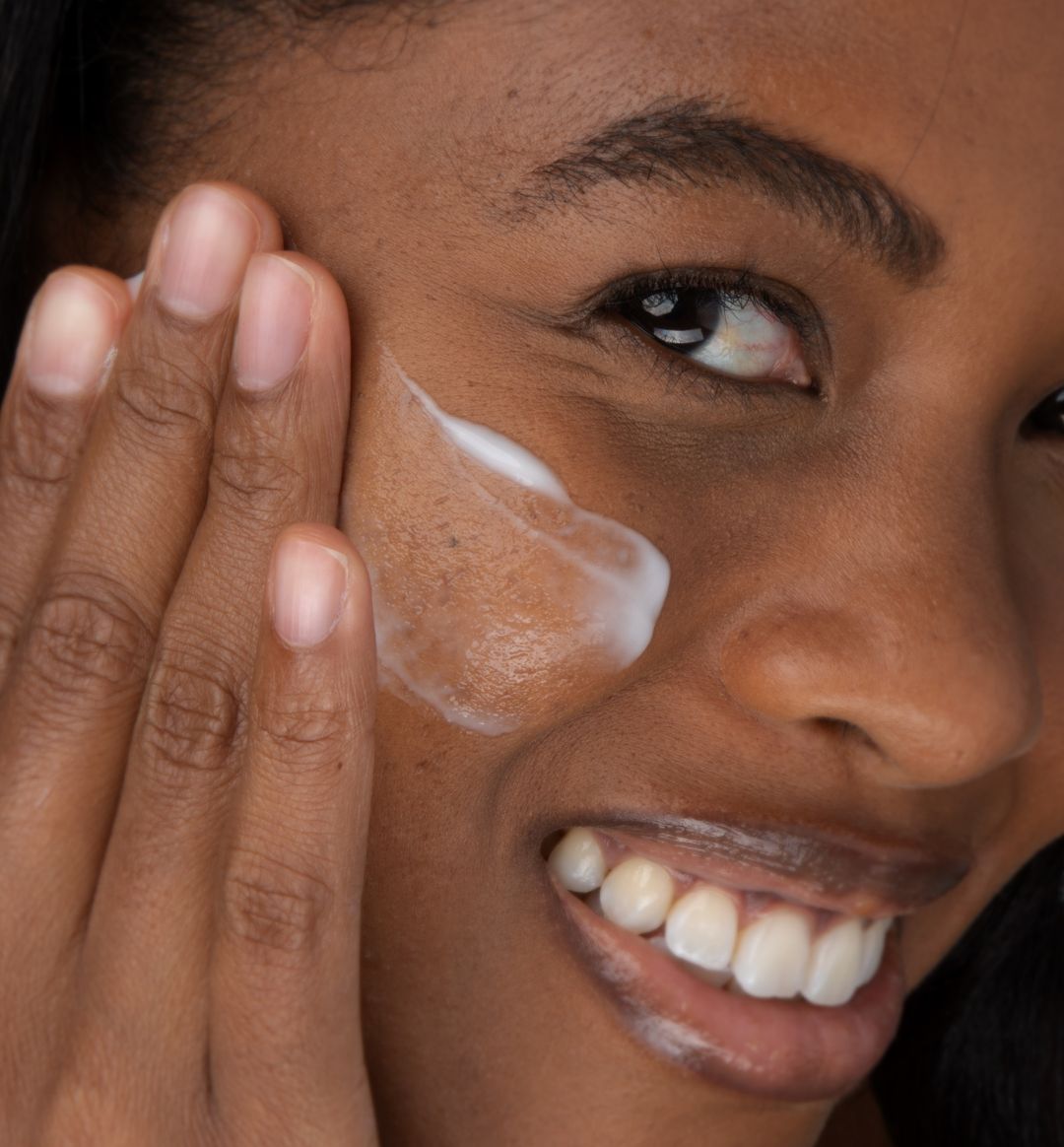
Now that we’ve got mainstream products and their toxic culprits right where we want them, it’s time to make some decisions on how we want to proceed to achieve clean beauty victory! And with that comes some easy ways you can transition into this beauty game-changing moment.
#1. Do simple swaps for everyday products
In other words, don’t throw all your products out. Tossing out all your conventional beauty items at once can be overwhelming – especially in the research-and-search transition into clean beauty products. Strike a balance!
Do some makeup and skincare swaps of the most important items (cleaners, moisturizers, and foundations) for natural alternatives. If you have sensitive or oily skin, an abrupt change might spell irritation, breakouts, and acne. So, it’s ok to slowly phase out old favorites while you find suitable alternatives.
If you’re looking for a natural alternative to beat dry skin during the cold, dryer months without clogging your pores, our Intensive Nourishing Facial Oil provides long-lasting hydration, all-star anti-aging properties, and is beneficial for ALL skin types and concerns.
#2. Find clean beauty brands
A way to simplify the process of understanding and avoiding toxic ingredients is to buy from brands that are committed to choosing safe, all-natural alternatives to mainstream cosmetic ingredients. Find a natural skincare brand whose values align with yours, so you can rest assured that you’re using safe, quality ingredients.
And, just because it’s natural ingredients, it doesn’t mean these formulations lack the potency to make a difference in your skin like conventional ingredients. The anti-aging standard or retinol is a great example. We curated a chemical-free, but a plant-based alternative to retinol in our Bakuchiol Oil Serum. This skin-softening, moisturizing facial oil is made with age-correcting bakuchiol, which is a gentle yet powerful botanical with the same benefits as retinol.
#3. DO some DIY clean beauty
Who says you can’t shop in your kitchen to whip up a lean-green-clean mask? We’ve tried plenty of DIY alternatives from everything green tea to making your lip tint. Yes, we are trying to move in on that lip balm you’re trying to hang on to. These quick and fun tutorials can help jumpstart your transition into clean beauty!
#4. Set the standard
Hold yourself to the highest standard for natural beauty products – just like we do at 100% PURE! We have a proven track record of providing the highest quality ingredients and products for you for over two decades. We emphasize its goal of educating customers on the importance of natural ingredients and the harmful effects that toxic ingredients can have on the skin, body, health, and environment.
The Standards We Set:
All 100% PURE™ formulas follow strict purity standards with sensitive skin types in mind, and will never contain sulfates, parabens, silicones, or phthalates. We source our pigments from fruits and vegetables instead of synthetic FD&C colorants and heavy metal dyes. Our commitment to protecting animals, and as a cruelty-free brand, we will never test on animals.
We can still work together to reduce the toxic ingredients in our products. As we continue to push for formulation transparency, non-carcinogenic beauty, long-term testing, and precautionary regulation, we’re likely to not only achieve reform in the industry but help to spread more wholesome options.
In conclusion, clean beauty is the way forward! The benefits of using natural skincare ingredients cannot be overstated. From promoting better skin and a healthier you to preserving the environment, clean beauty has it all. So, make the switch today and see the difference for yourself. Say goodbye to harmful chemicals and hello to a beautiful, healthier you and the planet.
- Tags: February-2023, Wellness
We carefully hand-select products based on strict purity standards, and only recommend products we feel meet this criteria. 100% PURE™ may earn a small commission for products purchased through affiliate links.
The information in this article is for educational use, and not intended to substitute professional medical advice, diagnosis, or treatment and should not be used as such.


